Introduction
Architectural rendering stands at the intersection of art and technology, transforming abstract concepts into vivid visual narratives that captivate audiences and foster engagement. As a pivotal tool in the architect’s arsenal, high-fidelity renderings not only convey design intent but also evoke emotional responses, encouraging investment and interest long before the first brick is laid.
This article delves into the multifaceted world of architectural rendering, exploring best practices, audience engagement strategies, and the latest technological innovations that are reshaping the industry. By examining the crucial elements of lighting, materials, and seasonal dynamics, as well as the integration of cutting-edge technologies like virtual and augmented reality, the discussion highlights how architects can leverage these tools to enhance their storytelling capabilities and drive project success in an increasingly competitive landscape.
The Art of Architectural Rendering: Captivating Audiences Through Visual Storytelling
An architectural rendering project showcases how architectural visualization transcends mere technical execution; it embodies an artistic expression that articulates a vision, stirs emotions, and narrates a story. High-fidelity 3D images are not just visuals; they serve as vital tangible assets that can ignite interest and investment, acting as a conduit between conceptual designs and experiential realities. This empowers architects to convey their ideas through compelling narratives that engage audiences and stakeholders.
The role of pre-sales visualization is particularly significant; it enhances project confidence and generates investment by providing these tangible assets long before physical construction begins. These depictions foster immersive experiences that resonate profoundly with viewers and potential homeowners, establishing a sense of community from the outset. For example, a recent study revealed that 36% of participants visited the gardens prior to the VR experiment, demonstrating how visualization can enhance client engagement and experiential understanding.
By skillfully manipulating elements such as lighting, materials, and contextual environments, architects can showcase functionality and aesthetics effectively, enhancing client satisfaction and marketing effectiveness. Architectural depiction provides more than merely a picture; recent progress in imaging methods continues to transform storytelling in architecture, emphasizing the significance of visual narratives in design and communication strategies. Furthermore, the gap in social media marketing strategies, as evidenced by a case study indicating that 60% of the top 10 architecture firms in Manchester lack an Instagram presence, highlights the need for architects to leverage powerful visuals effectively.
This advancement in design representation is vital for enhancing stakeholder communication and recognizing design problems early, thus playing a key role in the overall success of projects.
Techniques for Success: Best Practices in Architectural Rendering
Successful design visualization is a multifaceted discipline that combines technical expertise with artistic insight, particularly in the realm of 3D representation. To achieve exceptional results, practitioners should adhere to several key best practices:
Lighting: The strategic use of both natural and artificial lighting is paramount for enhancing the ambiance and realism of a scene.
Effective lighting influences how materials and textures are perceived, significantly altering a viewer’s impression of the design and enhancing emotional engagement.Textures and Materials: Employing high-quality textures that closely mimic real-world materials is essential for adding depth and authenticity to renderings.
This meticulous attention to detail not only fosters a more immersive experience but also ensures that the design’s essence is captured, ultimately influencing client satisfaction and connection.Composition: Thoughtful composition involves deliberate consideration of scene layout, angles, and focal points.
By guiding the viewer’s eye to key design elements, architects can effectively showcase their vision and intent, enhancing the narrative of the space.Narrative Elements: Integrating storytelling aspects that resonate with the intended use of the space is crucial.
This approach aids viewers in envisioning themselves within the environment, deepening their emotional connection to the design.
As industry experts highlight, proper lighting not only enhances visual appeal but also ensures effective communication of the structural narrative. Alberto Cairo emphasizes this notion, stating, ‘What can designers and journalists learn from the success of Gapminder?’ This highlights the importance of data representation in architectural narratives.
In the context of producing statistics, it is essential to consider that the available data can vary based on the build target, influencing the application of these practices across different projects. For instance, the case study titled ‘Understanding the Power of Data Visualization’ illustrates how data visualization can enhance marketing campaigns when used correctly, thereby avoiding miscommunication and internal damage. When utilized in structural visualization, following these principles guarantees that visual components reinforce the central message of the design.
Along with these best practices, when selecting 3D design services, it is crucial to seek out providers whose architectural rendering project showcases a robust portfolio of prior work, effective communication abilities, and a cooperative approach to ensure that your vision is precisely depicted.
In general, adhering to these best practices in design visualization will be essential for success in 2024 and beyond.
Understanding Your Audience: Tailoring Renderings to Client Needs
Successful visual representations depend on a deep comprehension of the audience’s needs and preferences, and this starts with our collaborative consultation process at J. Scott Smith Visual Designs. This multifaceted approach encompasses several key strategies:
- Client Consultation: Engaging in comprehensive discussions with clients is crucial to uncover their vision, goals, and priorities for the project.
Our customized 3D visualization consultation guarantees that we collaborate closely with clients to match images with their expectations, making modifications based on continuous feedback. We utilize structured methodologies, such as detailed questionnaires and interactive workshops, to gather insights effectively.
- Target Audience Analysis: Identifying the end-users of a space is essential. Comprehending their expectations and experiences enables architects to customize visuals that resonate and enhance relatability. Research indicates that 56 percent of companies utilize website personalization, highlighting a broader trend of customization that can also be applied in design contexts.
Furthermore, personalized emails result in 6x higher transaction rates, underscoring the importance of tailoring presentations to meet client expectations.
- Feedback and Iteration: Presenting initial visuals to clients and stakeholders fosters a collaborative environment for feedback.
This iterative process enables architects to make necessary adjustments, ensuring alignment with the client’s vision and desires. Such engagement not only improves satisfaction but also enhances the overall quality of the final product.
Our commitment to client relationships is reflected in testimonials from satisfied clients, such as Jane Doe, who stated, ‘J. Scott Smith Visual Designs truly understood my vision and brought it to life with stunning detail.’ This emphasis on trust and reliability is crucial in a competitive industry where approximately 607,000 architecture-related businesses exist globally.
The capability to efficiently customize visual designs is increasingly becoming a differentiator in this market, as highlighted by another client, John Smith, who noted, ‘their personalized approach made all the difference in our endeavor’s success.
Seasonal and Temporal Dynamics: Enhancing Renderings with Time and Mood
Incorporating seasonal and temporal dynamics into architectural visuals can significantly elevate their emotional resonance and effectiveness. Firstly, the seasonal context plays a crucial role; illustrations can depict various seasons—whether it’s a building framed by vibrant autumn leaves or nestled within a serene winter landscape—each scenario evokes distinct emotional responses from viewers, fostering a deeper connection to the project and its potential residents. Additionally, the time of day is pivotal in shaping the mood of an illustration.
For instance, morning light, characterized by its clarity and freshness, imparts a sense of vitality, while evening light introduces warmth and intimacy, enveloping spaces in a soft, inviting glow. Furthermore, the inclusion of weather conditions—such as rain or snow—adds layers of realism and context, enabling viewers to visualize how a structure interacts with its environment throughout the year. A pertinent case study, ‘Rainy Weather in 3D Rendering,’ demonstrates this point effectively; rainy atmospheric renderings not only add emotional appeal but are also fitting for both indoor and outdoor representations, enhancing the romantic and intimate aspects of interiors.
This aligns with the notion that architectural visualization offers more than just an image; it creates an experience that connects future homeowners to their potential living spaces. As noted by S.O., an esteemed author in the field,
It is necessary to explore the consequences of such changes in a variety of pilot initiatives, as this would enable a more complete understanding of the impact of climate on construction endeavors of varying durations and complexities.
This understanding is essential, particularly when considering that hot and humid weather can extend timelines by 3–38% compared to initial plans.
Moreover, the integration of seasonal dynamics aligns with our commitment to providing future homeowners with a comfortable and efficient living environment. Thus, by thoughtfully integrating these elements, architects can enhance the narrative quality of their architectural rendering project showcases, making them not only visually appealing but also impactful in conveying the intended atmosphere and experience of the space, ultimately encouraging investment through effective storytelling. Furthermore, by presenting successful case studies of pre-sales visualization, we can further demonstrate how these visuals act as a link between concept and reality, enabling developers to create interest and investment well in advance of the physical realization of the endeavor.
The Future of Architectural Rendering: Innovations and Trends to Watch
The construction visualization sector is experiencing considerable changes, driven by technological advancements. High-quality visual renderings in architectural rendering project showcases act like a window into the future of your endeavor, enhancing communication between homeowners and builders and allowing all stakeholders to visualize its potential clearly. This clarity isn’t just nice to have; it’s crucial for making informed decisions and building excitement about what’s to come.
Notable trends shaping the future of this field include:
Virtual Reality (VR): This technology immerses clients and stakeholders in realistic environments, enhancing their ability to comprehend designs and provide constructive feedback. The adoption of VR in architectural practices has surged, with 28% of professionals indicating a strong preference for its integration into design processes.
Augmented Reality (AR): By overlaying digital elements onto the real world, AR facilitates interactive experiences that enable stakeholders to visualize projects within their actual context, thereby improving decision-making and collaboration.
Live Rendering: Progress in graphics software now enables real-time depiction, allowing architects to make prompt adjustments and swiftly see the effects of their modifications. This architectural rendering project showcases a capability that significantly streamlines the design process while enhancing client engagement.
AI and Lifelike CG Humans: The emergence of AI in building imagery is closing the divide between authenticity and the uncanny valley, producing lifelike CG humans that improve the overall effect of images. This innovation aids in overcoming previous limitations in representation, allowing for more relatable visualizations.
With an increasing emphasis on eco-friendly practices, the architectural rendering project showcases sustainable elements more frequently. This trend aligns with increasing environmental concerns and is backed by a report from OpenAsset, which indicates that 28% of architects, engineers, contractors, owners, and investors claim that most of their construction endeavors qualify as green. Additionally, 42% of professionals expect their initiatives to qualify as green within the next three years.
As the global digital asset management market, valued at $3.96 billion in 2023, is expected to reach $16.18 billion by 2032, AEC leaders should consider implementing digital asset management systems to optimize organization and enhance project outcomes.
Conclusion
Architectural rendering is more than a technical skill; it is an essential narrative tool that fuses artistic vision with advanced technology to engage audiences and stakeholders alike. By employing best practices such as:
- Strategic lighting
- High-quality textures
- Thoughtful composition
- Narrative elements
architects can create compelling visualizations that resonate deeply with viewers. These renderings not only enhance client satisfaction but also serve as pivotal assets in the pre-sales process, generating investment and fostering a sense of community long before construction begins.
Understanding the audience is fundamental to tailoring renderings that align with client expectations and project goals. Engaging in thorough consultations and iterative feedback ensures that the final product reflects the clients’ visions while also addressing the needs of end-users. This personalized approach not only differentiates architectural firms in a competitive landscape but also strengthens client relationships, ultimately leading to project success.
As the architectural rendering industry continues to evolve with innovations like:
- Virtual and augmented reality
- Real-time rendering
- The integration of sustainable practices
the importance of effective visual storytelling cannot be overstated. These advancements empower architects to create immersive experiences that enhance communication and decision-making among stakeholders. By embracing these trends and techniques, architects can elevate their practice, ensuring that their visions are not only seen but felt, paving the way for impactful and successful projects in the future.

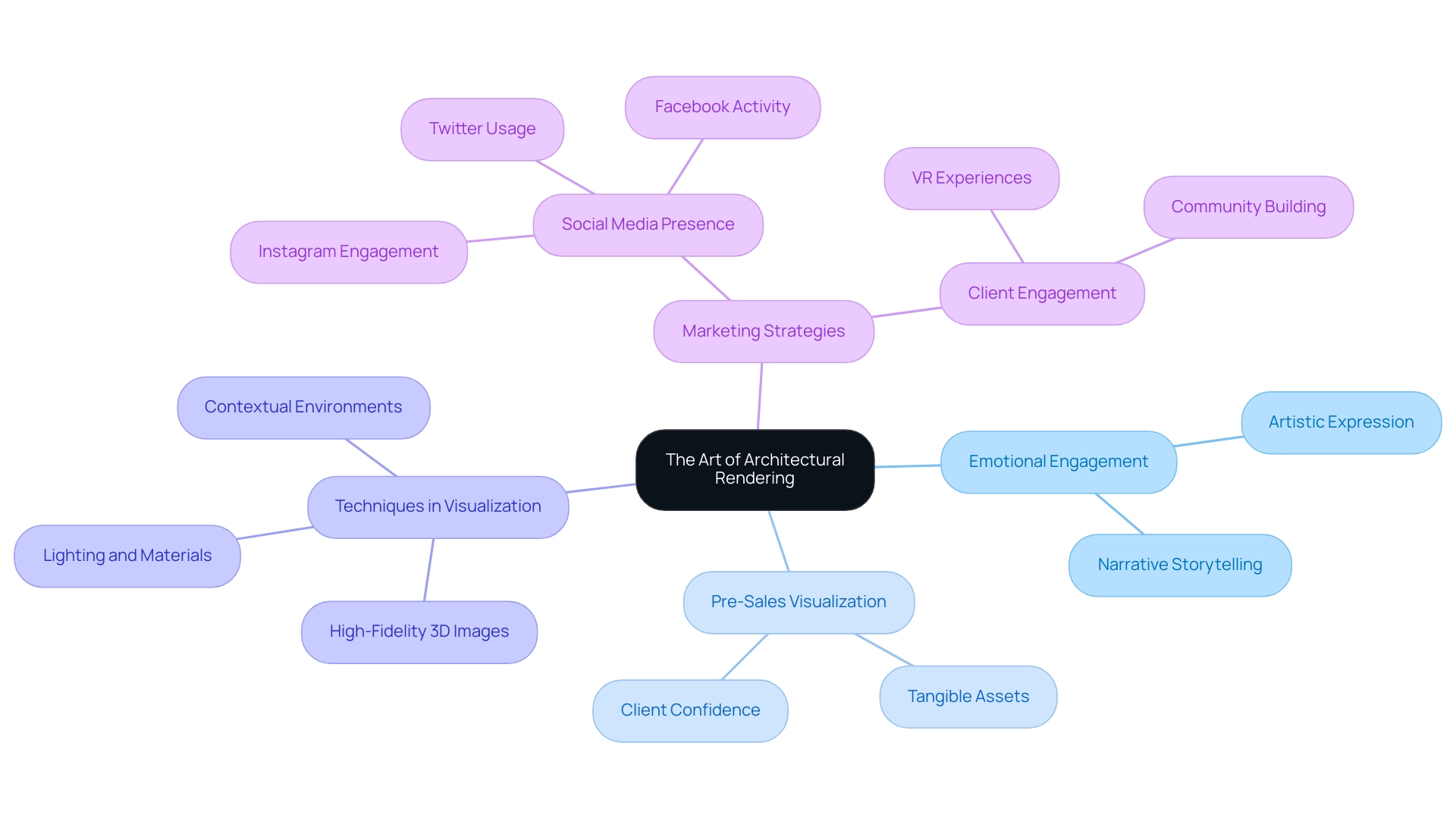
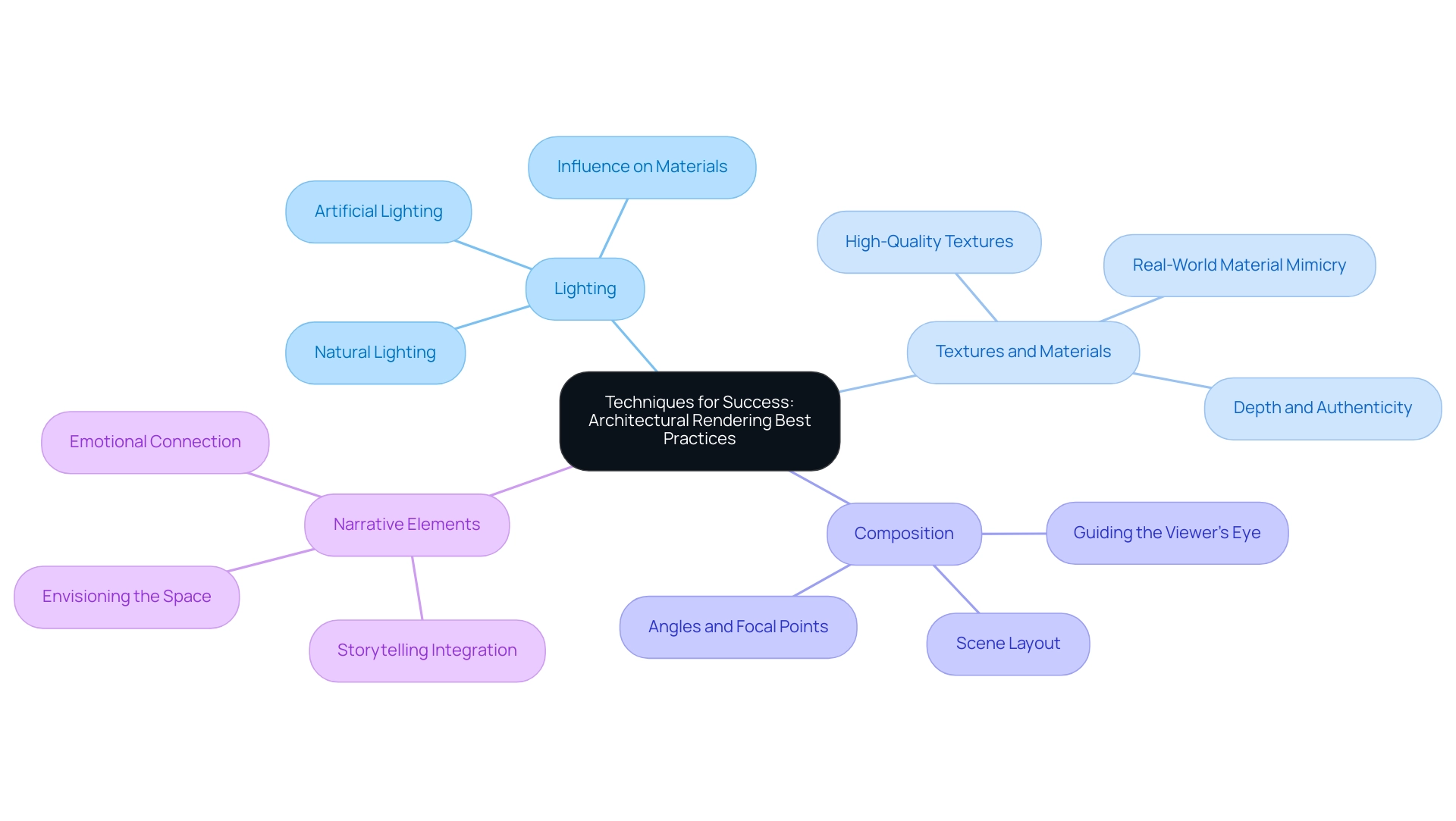
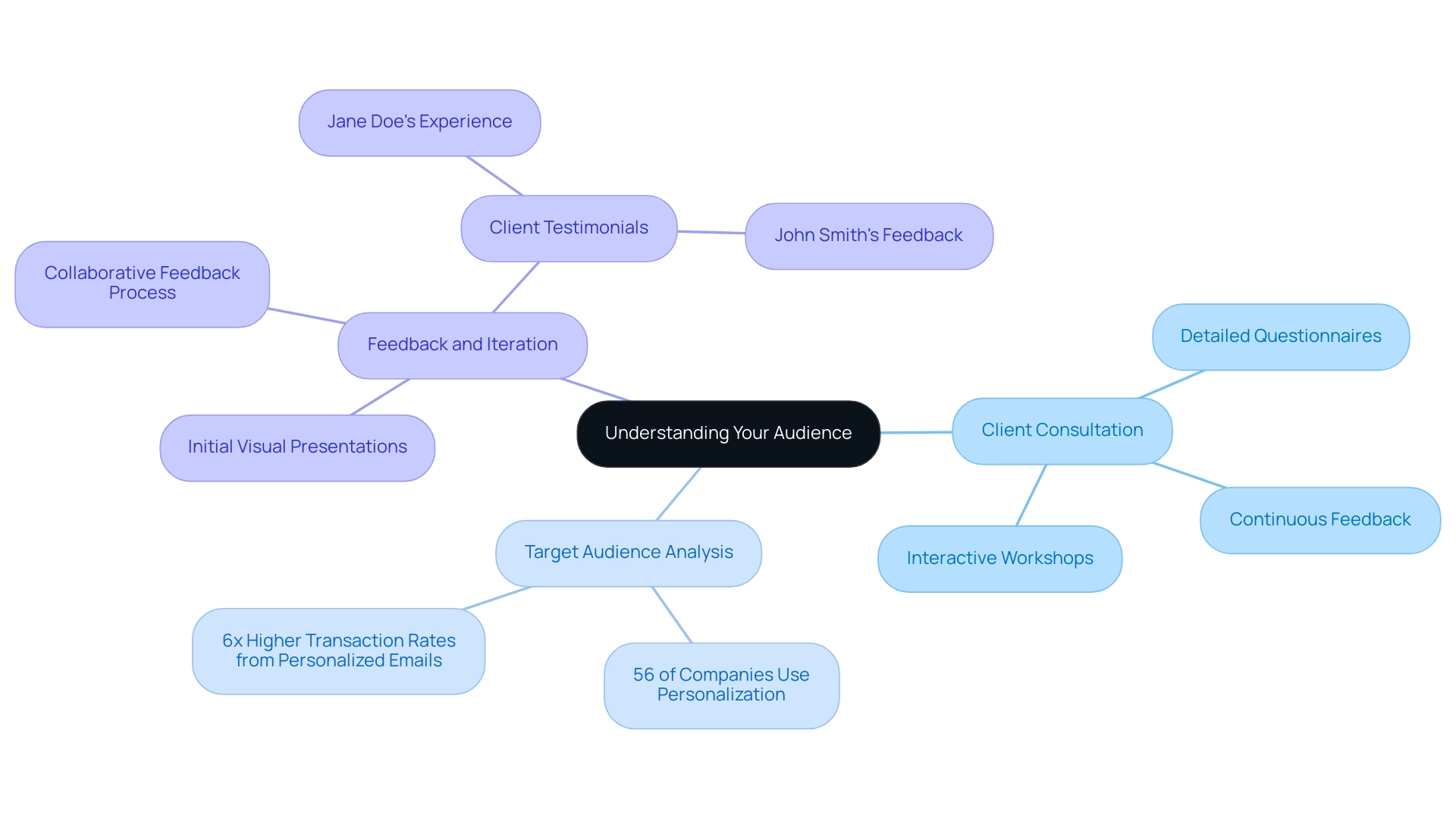
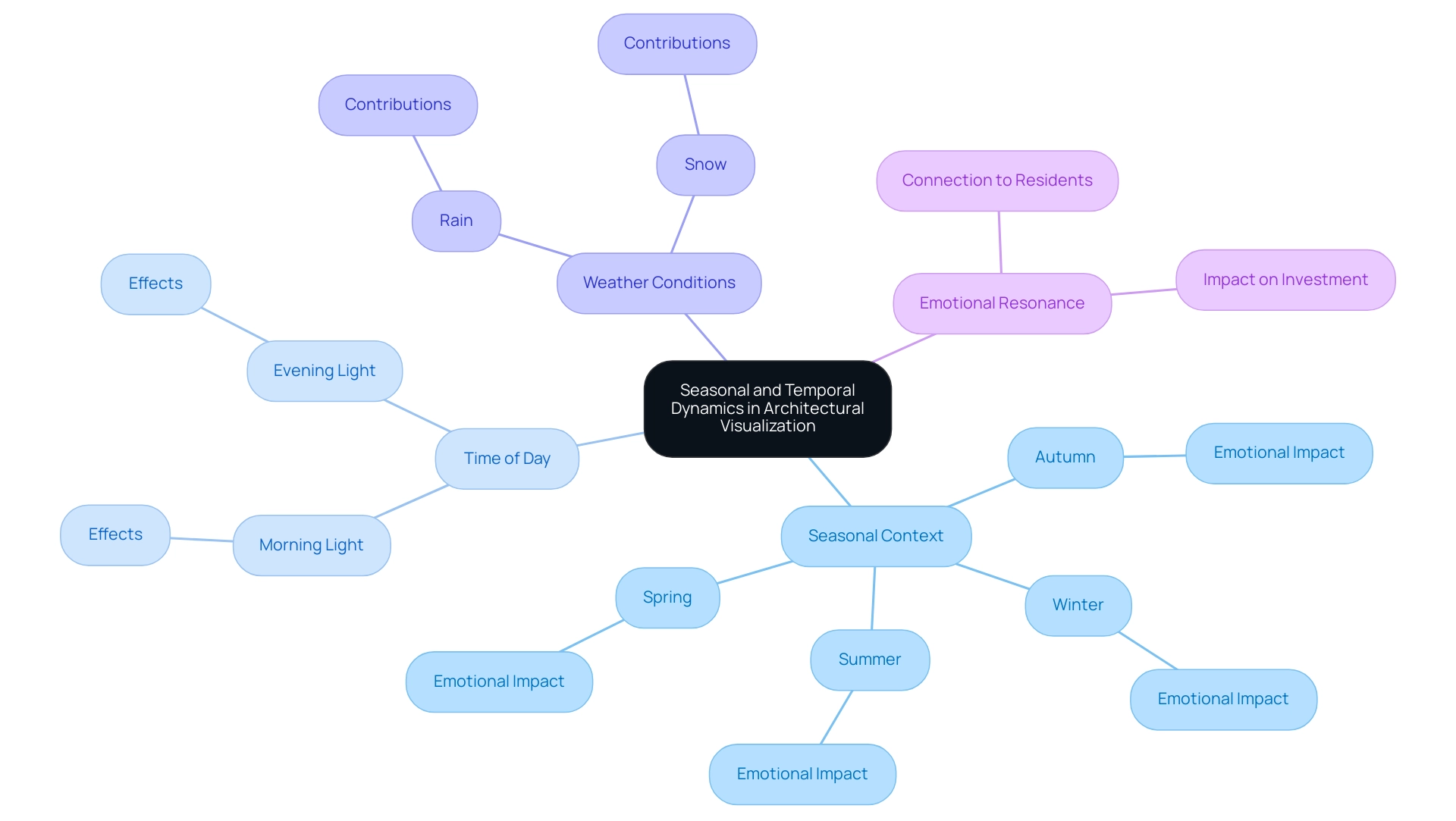
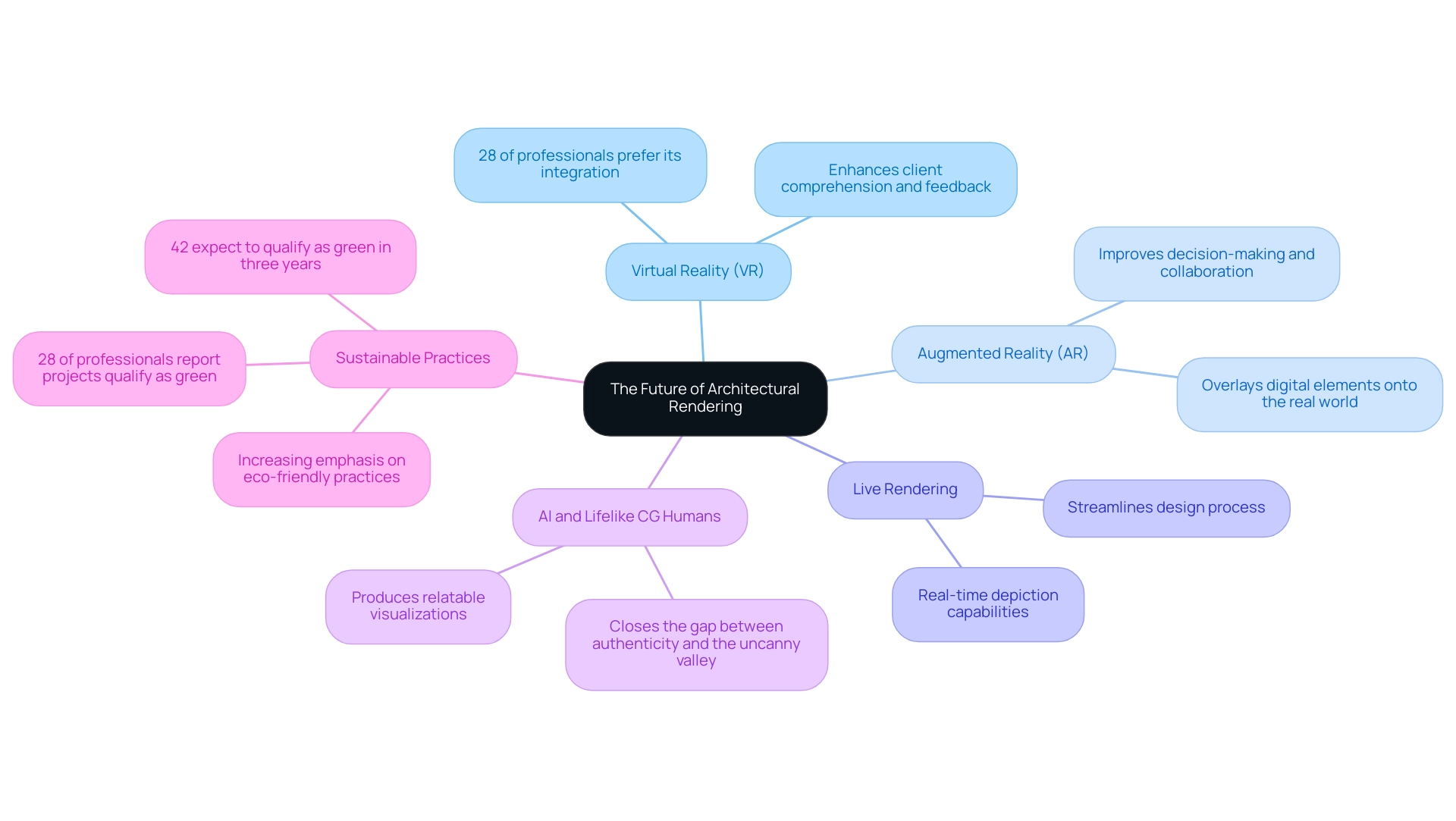
0 Comments